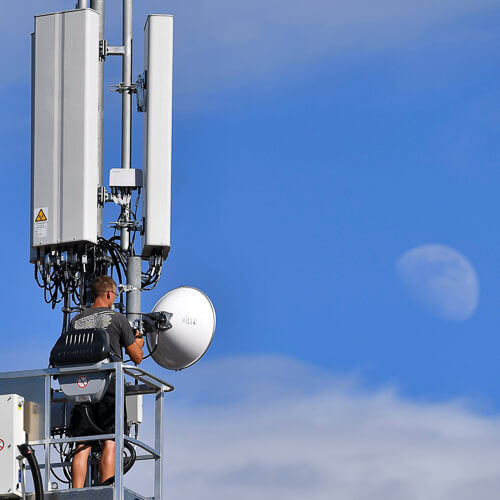
MWC23 – Laurent Leboucher, Orange Group CTO, is bullish on the green credentials of open radio access network (RAN).
Wearing his Next Generation Mobile Networks (NGMN) Alliance board member hat – he was speaking at the NGMN Alliance’s press conference at Mobile World Congress – Leboucher reckoned it was only a matter of time before the industry body proved that open RAN is, or will be, more energy efficient than traditional RAN.
Figure 1:  NGMN believes open RAN is the greener option.
NGMN believes open RAN is the greener option.
(Source: dpa picture alliance / Alamy Stock Photo)
“There are some questions within industry whether or not [open RAN] increases energy consumption, but where is the truth?” he asked.
Leboucher seemed fairly confident he had the answer. “I can tell you [we’re] pretty sure we’ll be able to show and demonstrate that O-RAN [compliant] technologies will not only be on a par with existing traditional [RAN] technologies, but most probably it will be even better [in terms of energy efficiencies],” he said. “We’ll be able to prove it with data.”
Asked in the Q&A session to explain further, Leboucher stood his ground. He alluded to the possibility of pooling compute resources as a way to save energy, and the emergence of “smart algorithms” that will enable a cloud-based network to be configured in such a way as to “balance very efficiently the quality of experience and optimize energy [consumption] to follow users as they move around.”
The Orange Group CTO enthused about RIC-enabled antennas to support that capability, although he conceded “we’re not there yet.”
Leboucher also acknowledged that energy-draining power amplifiers will still be needed in an open RAN setting, just as they are in traditional RAN. He didn’t give a timeframe as to when NGMN Alliance will lay out its data-backed ‘proof’ of open RAN’s greener credentials.
Are you sure about that?
James Crawshaw, principal analyst at Omdia, a Light Reading sister company, doesn’t share Leboucher’s open RAN optimism.
“I think it is safe to say that the latest purpose-built RAN systems are more energy efficient than the best open RAN solutions that are available on the market today,” he told Light Reading.
“Given that most of the energy is consumed in the radio unit you would need to assume that Fujitsu, or another open RAN new entrant, can somehow make a power amplifier that is more efficient than one from Ericsson, Nokia or Huawei. That seems unlikely to me given the relative size of their R&D budgets in this area.”
Crawshaw accepted, at least in theory, that energy could be saved during the course of a day by virtualizing distributed and centralized units, hosting them on shared servers to offset the inherent disadvantage of using generic compute (x86) instead of dedicated application specific integrated circuits (ASICs).
While x86 can do multiple tasks, explained Crawshaw, ASIC only does one – processing radio signals – but does it very efficiently and consumes less energy in the process than an x86 would.
He also pointed out that big traditional RAN vendors also offer energy savings through virtualized RAN, but as part of a “one-stop shop” offering rather than in a mix-and-match open RAN setting.
“In my view the only way open RAN could be more energy efficient than closed RAN is if by lowering the barriers to entry there is more innovation and new energy saving techniques are invented than otherwise happen in a triopoly of Ericsson, Huawei and Nokia,” said Crawshaw.
Related posts:
— Ken Wieland, Contributing Editor, special to Light Reading
About the Author(s)
You May Also Like




_International_Software_Products.jpeg?width=300&auto=webp&quality=80&disable=upscale)







